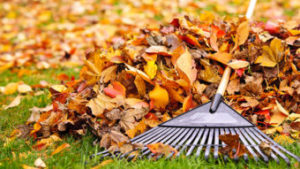
Mowing and Leaf Removal – Grass continues to grow as the weather remains relatively mild for this time of the year and we continue to get regular rainfall. What we want to impress on all of you is that it is unhealthy for lawns to be left long when the grass growing season ends. Shaggy lawns not only look lousy, they collect more leaves, they get matted down when snow falls on them, they’re more susceptible to snow mold and other winter diseases, and they are much slower to green up in the spring. You should continue with regular (if less frequent as growth slows) mowing through Thanksgiving and into December if the ground remains unfrozen. If you use a mowing service, ask them to make at least one final cut close to Thanksgiving. Similarly, as the leaves continue to fall, we implore you to remove these leaves regularly. Initially, at least, you can do a good job of keeping the lawn leaf-free by chopping them up as you mow. Later, as the heavy leaf fall abates, we encourage you to rake, sweep, blow, or vacuum them up to leave a basically leaf-free lawn. From then on, you’ll be able to maintain the leaf-free appearance as you continue to mow as needed.
Late Fall Seeding – By now, all serious seeding/reseeding should have been long-since completed. Although soil temperatures are still well above freezing, they are cooling as the overnight temperatures fall more regularly into the 30s and below, and seed germination becomes more difficult and slower even when the areas seeded are kept moist. The Lawn Depot recommends that the only seeding that should be considered from now on (early-mid November) should be emergency (insect damage, construction, new lawns) seeding and should be with our fastest-germinating seed mix, EVERGREEN HYBRID PERENNIAL RYEGRASS BLEND. And any seeding done from now on (as well as seed sown earlier that has not yet fully germinated) should be irrigated regularly (daily). It does not matter whether the new grass is well enough established when winter dormancy sets in to have been mowed. Germinated grass is not adversely affected by cold. So, let your objective in the late fall be to get all the seed germinated. Then roots will continue to develop in the warmer underground, and by next spring the new grass will be ready to burst forth.
Late Fall Fertilizing with LAWN DEPOT WINTERFEAST TURF FOOD – WINTERFEAST TURF FOOD is the most beneficial feeding your lawn can get. At this time of the year the soil is warmer than the air; grass plants are still growing above-ground, albeit more slowly than a month ago, but underground, in the plants’ root zones the soil is still relatively warm and by stimulating the plant, now most of the benefit from the fertilizer goes to the underground portion of the plants. Roots grow denser and deeper in the warmer soil, which makes the turf literally bottom-heavy as it enters winter dormancy. Next spring, as growth starts again, lawns green up sooner, turf is thicker, and grass plants, both old and new are lush and healthy. Get your WINTERFEAST down now for best results!
Liming Lawns in the Late Fall – Liming acidic soils regularly allows fertilizer nutrients to be more readily absorbed by the growing grass plants. A soil pH of between 6.0 and 6.5 is ideal for the availability the macro-nutrients, as well as the micro-nutrients in most turf fertilizers to the plants. Liming should be done annually; it can be done any time when the ground is not snow-covered, but the best times for liming are when regular rainfall will carry the sweetening effect into the plants’ root zones. Lime at 15 lbs./1,000q. ft. if you’ve limed within the past year or so; lime at 50 lbs./1,000 sq. ft. if it’s been several years (or longer) since you last limed.
